Even though we might think we know everything there is to know about sea creatures, apparently that’s just not true.
While documentaries depict the various weird and wonderful living things that lurk beneath the surface, we don’t actually know that much about life in the deep blue.
But when a scientists took a trip down to the Nazca Ridge, they found some things they’d never seen before.
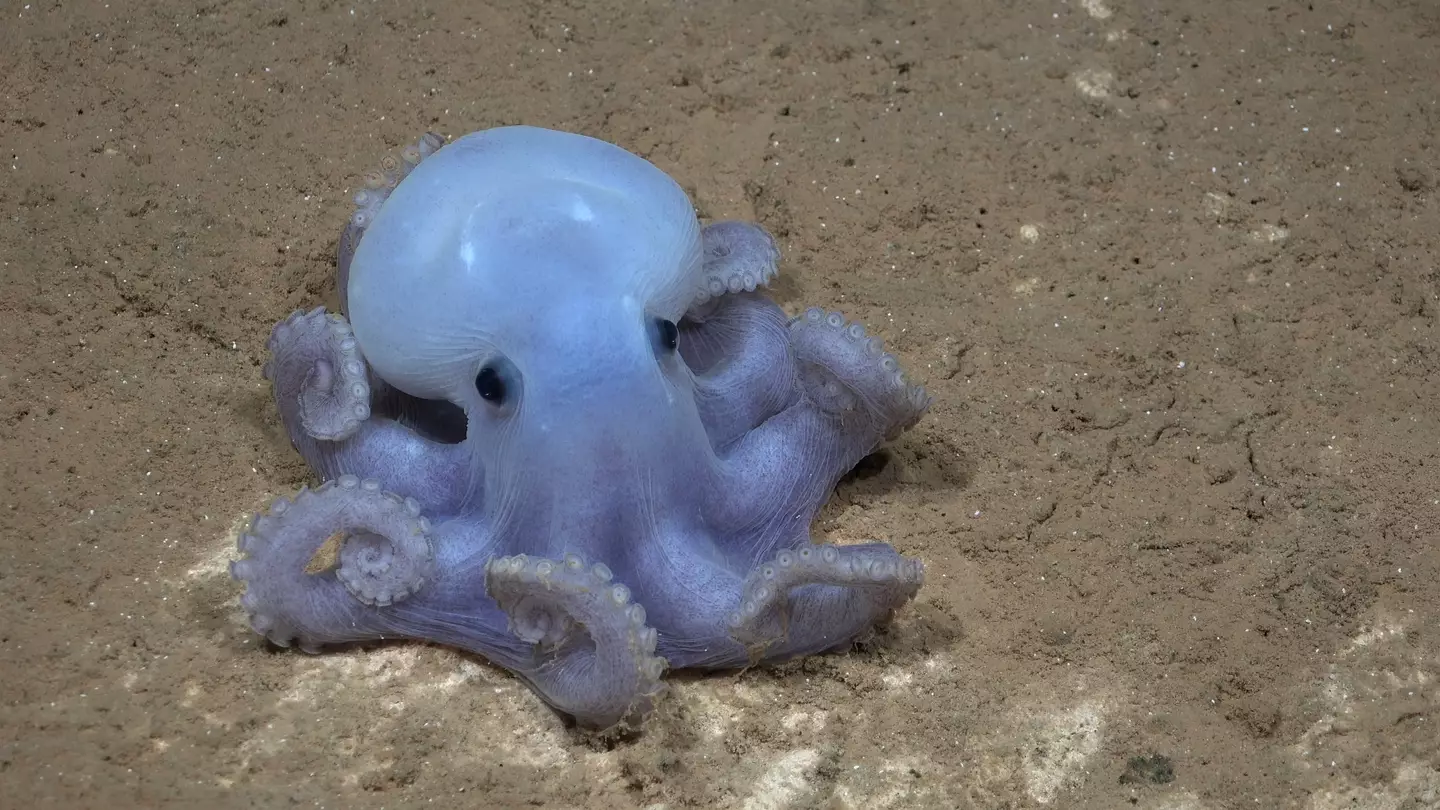
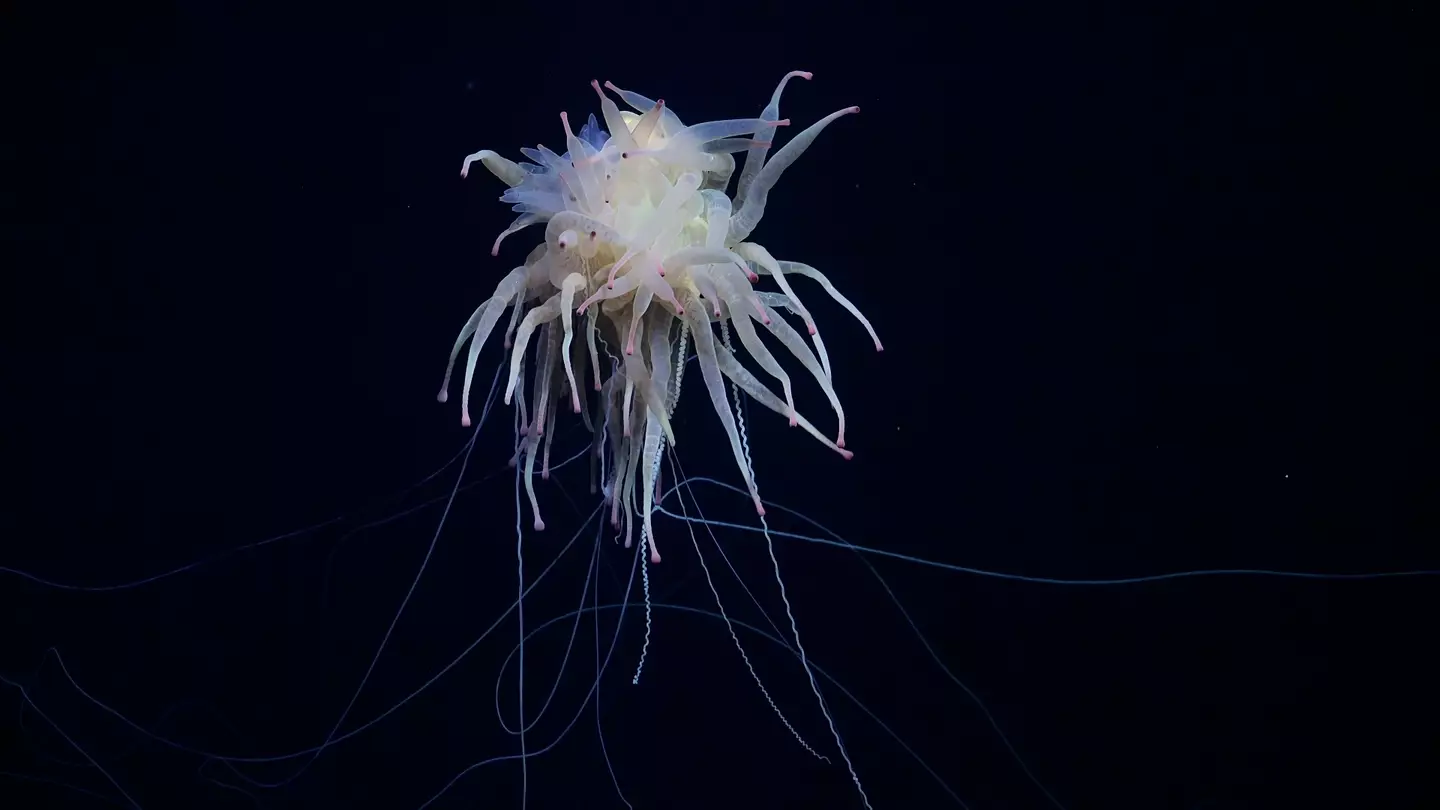
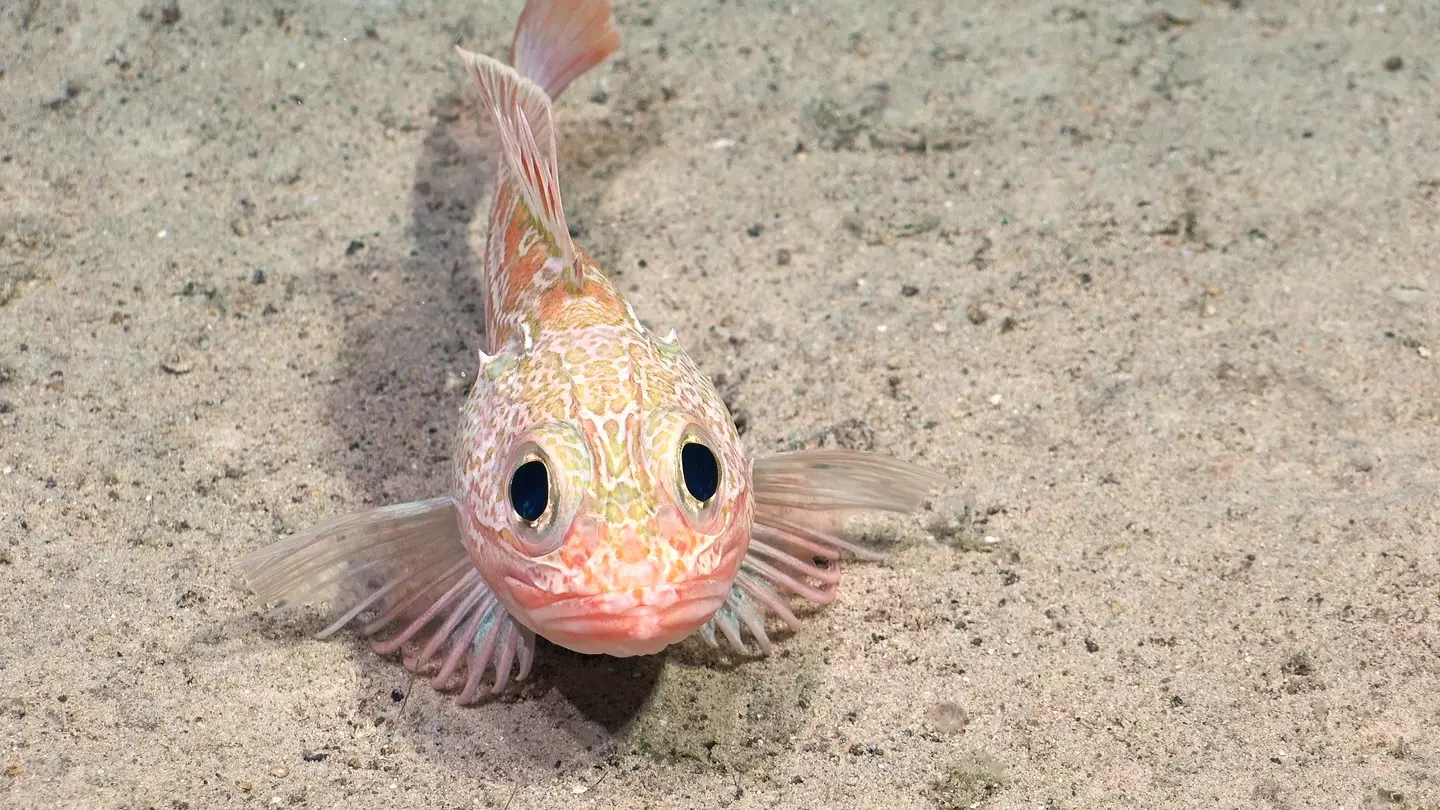 The species were found on the Nazca Ridge (ROV SuBastian / Schmidt Ocean Institute)
The species were found on the Nazca Ridge (ROV SuBastian / Schmidt Ocean Institute)
Having been the third time the team had been out to the stretch of water this year, this find isn’t as magical as the other two, which ended up documenting over 150 new species.
Nonetheless, the discovery is still pretty extraordinary.
Tomer Ketter, Co-Chief Scientist and Schmidt Ocean Institute Marine Technician, said in a press release: “Upon concluding our third expedition to the region, we've explored around 25 seamounts on the Nazca and Salas y Gómez Ridges.
“Our findings highlight the remarkable diversity of these ecosystems, while simultaneously revealing the gaps in our understanding of how the seamount ecosystems are interconnected.
“We hope the data gathered from these expeditions will help inform future policies, safeguarding these pristine environments for future generations.”
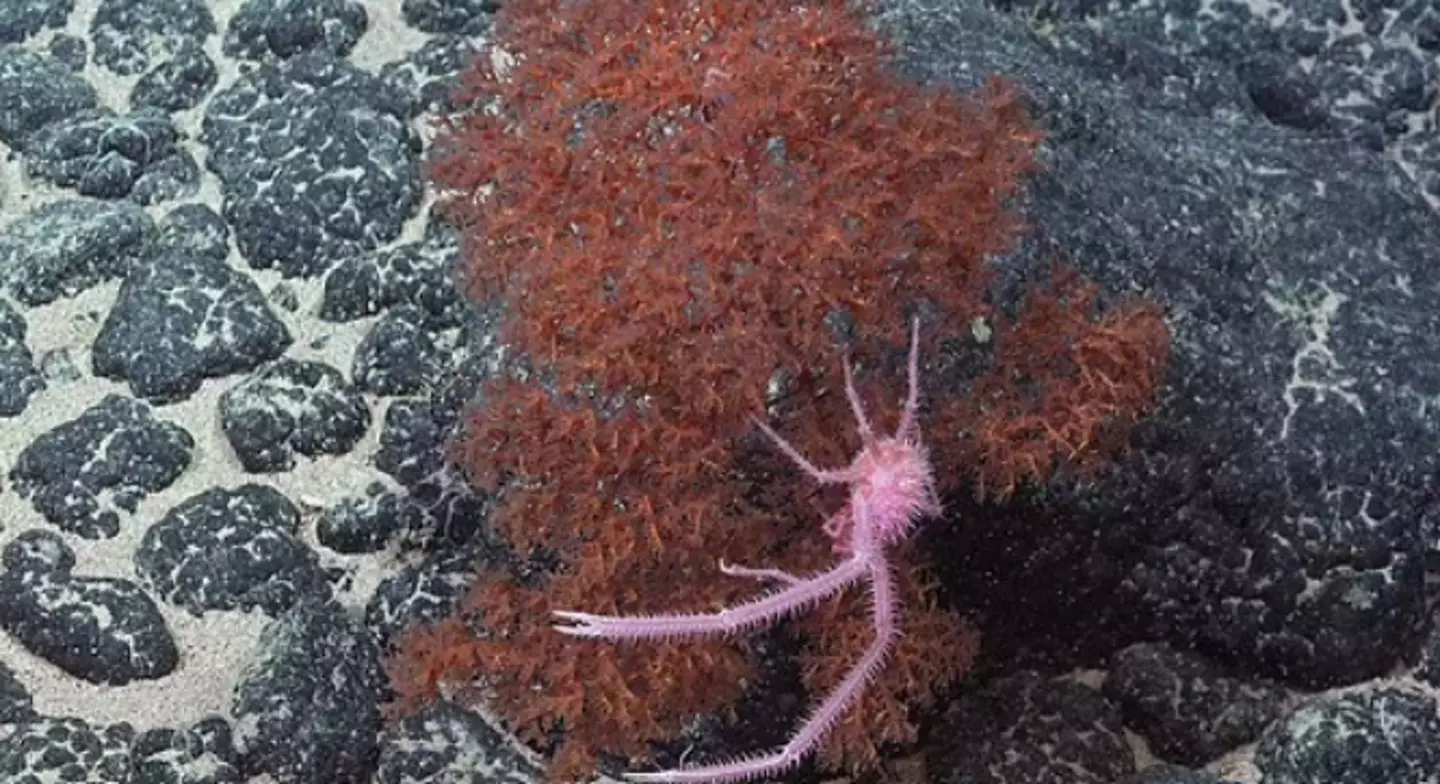
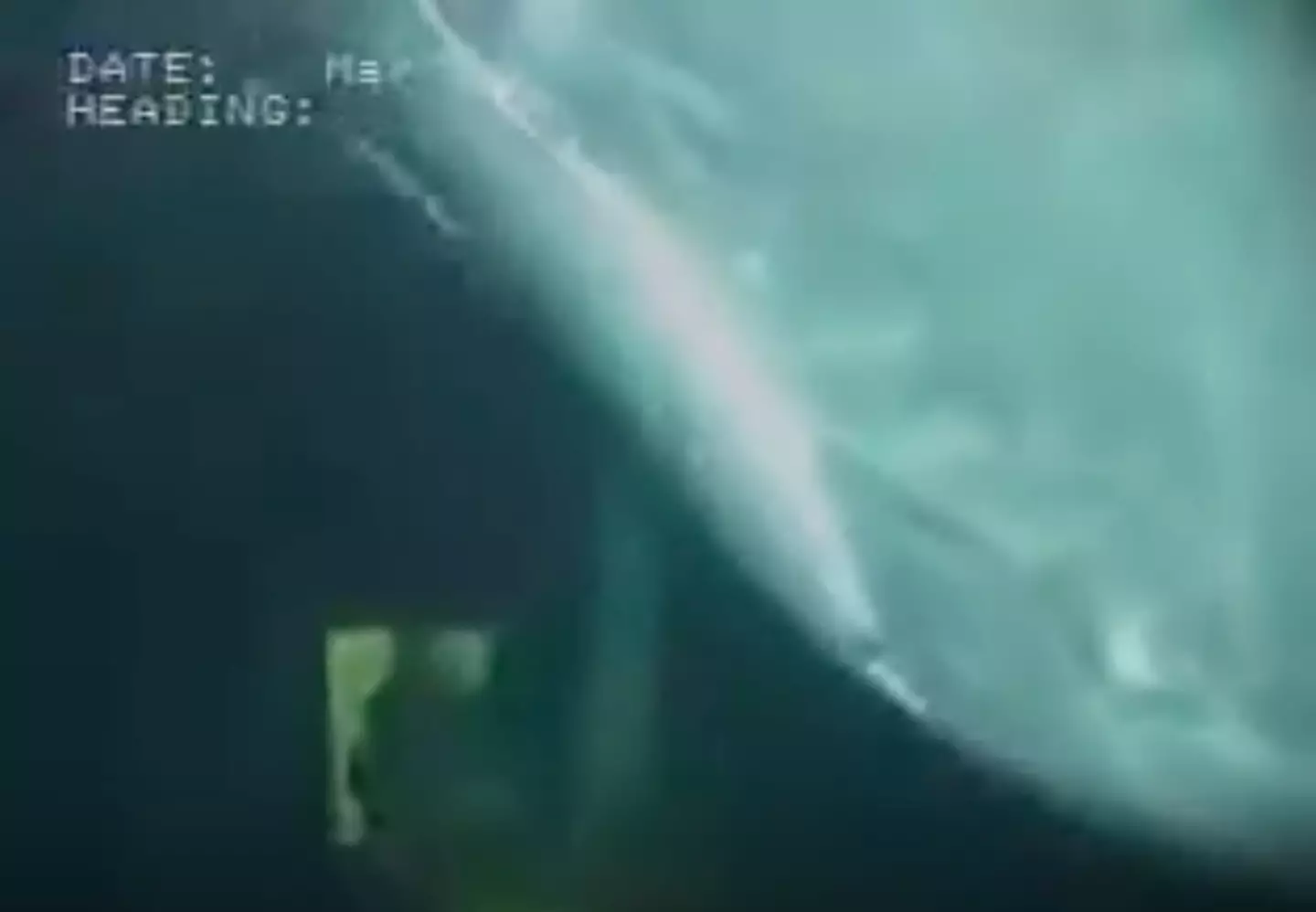
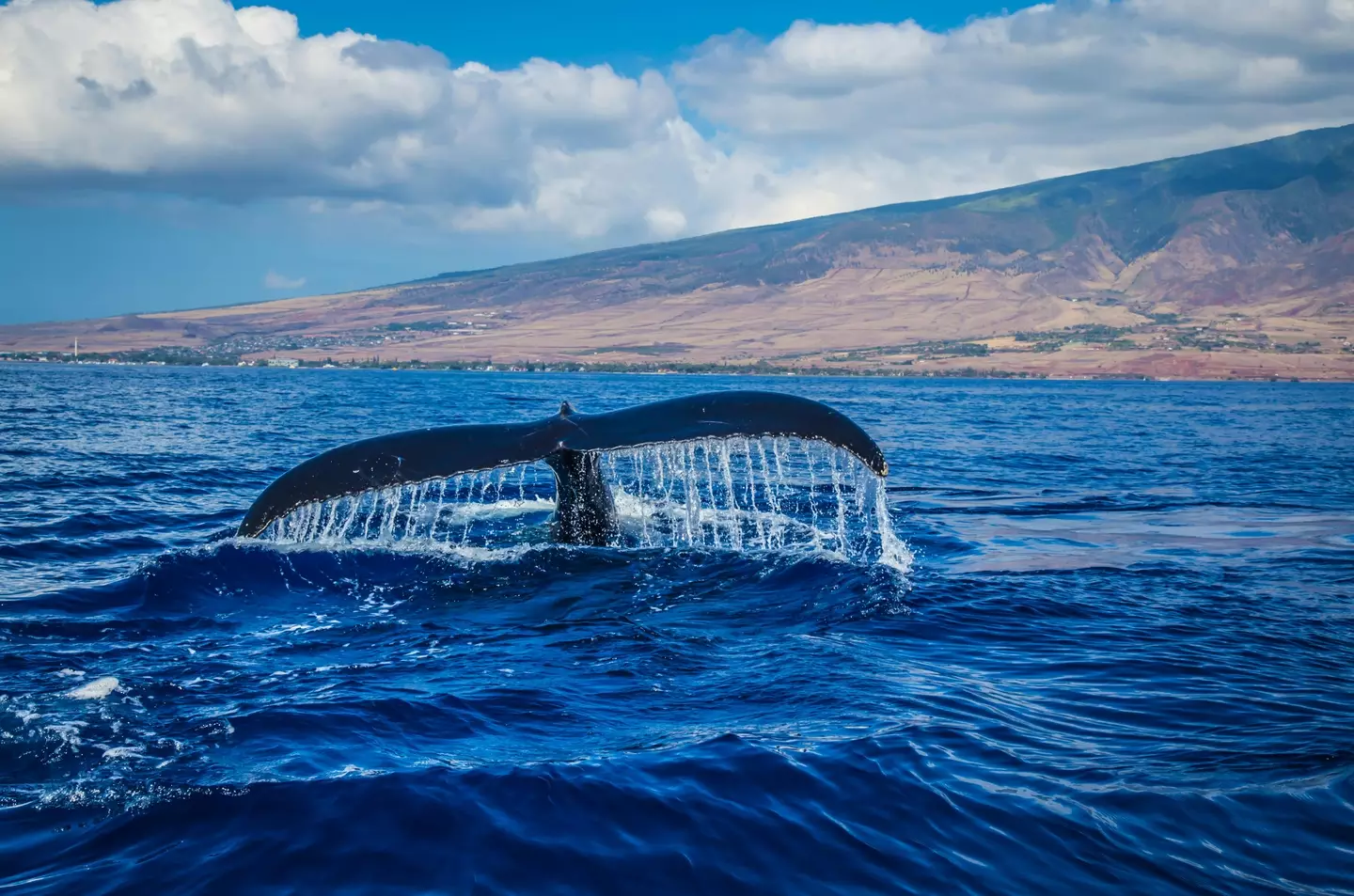
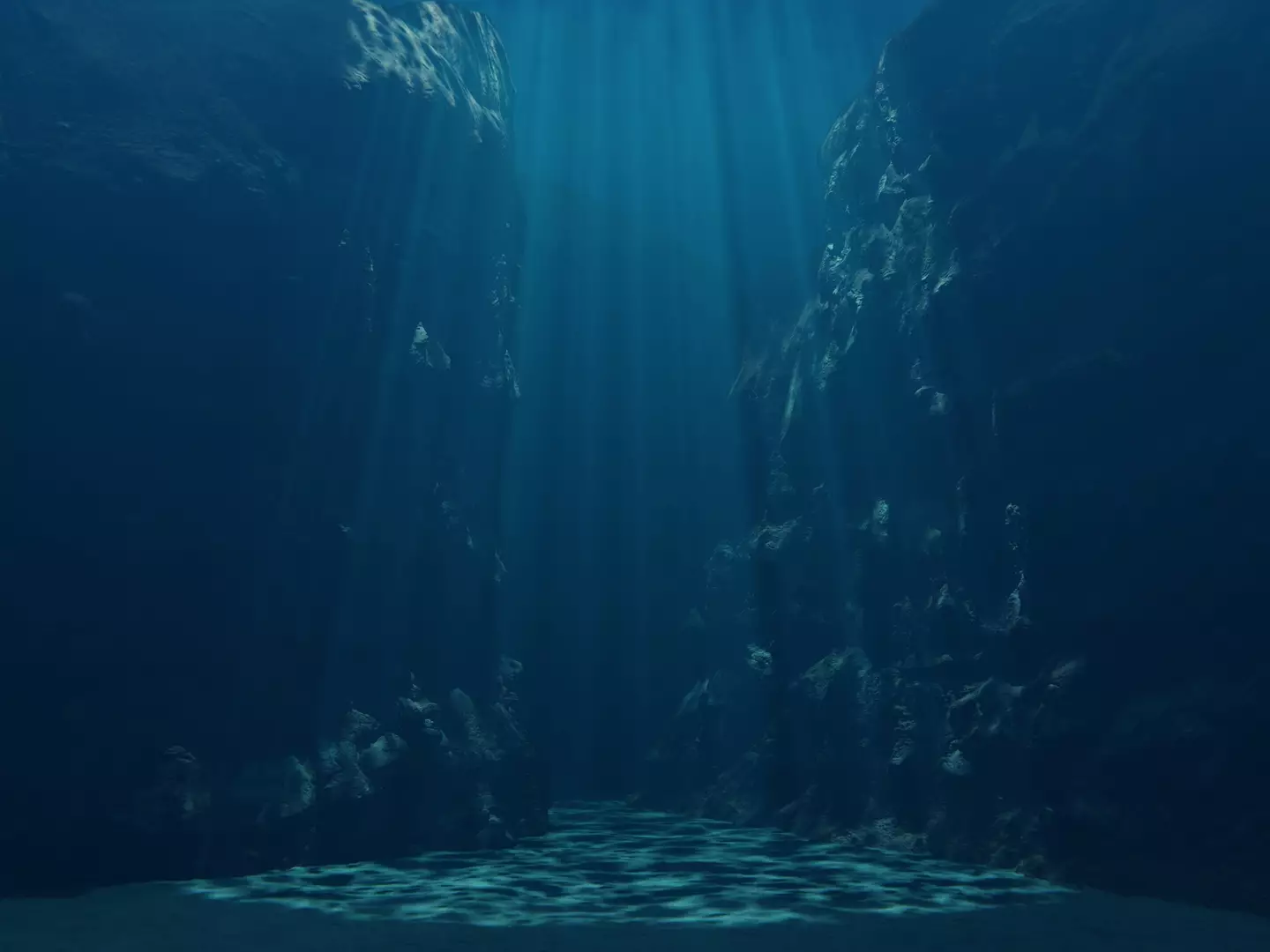 So much of the sea has been left unexplored. (Getty Stock Photo)
So much of the sea has been left unexplored. (Getty Stock Photo)
In the video, a rare squid can be seen wrapping its arms around a camera 1026m below the surface, where it is almost pitch black.
It's not just any rare squid though, known as the Taningia Danae, it can be seen making its approach towards the camera and spreading its tentacles over the camera lens, seemingly thinking that it was something that it could eat.
The species is known for having two incredibly large photophores on the end of two of its tentacles that produce bioluminescence, which have also been described as 'headlights'.
They are the largest known photophores in the known world, and are also known to produce flashes in the dark ocean to disorientate prey while hunting, which can also be seen in the video.
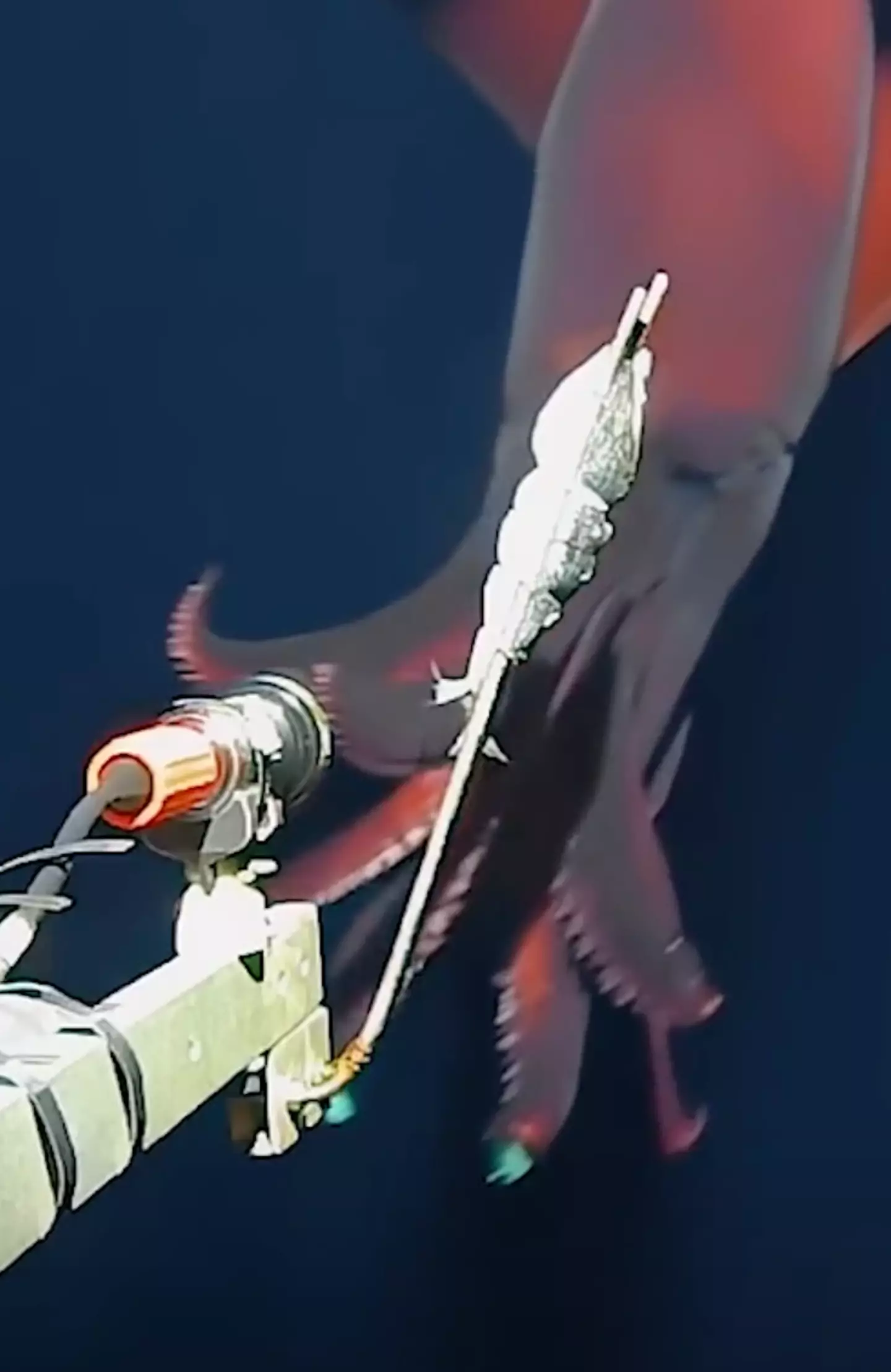
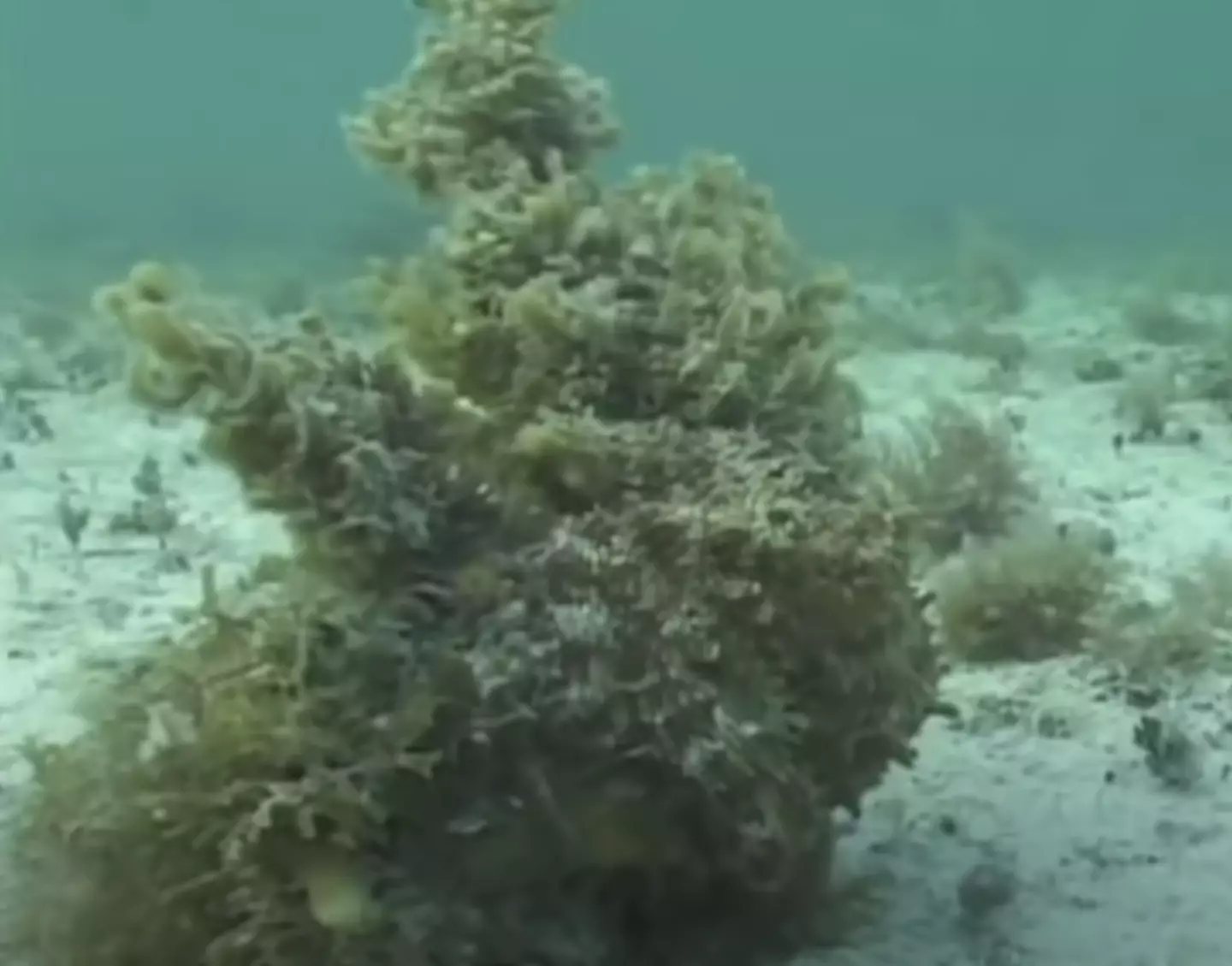
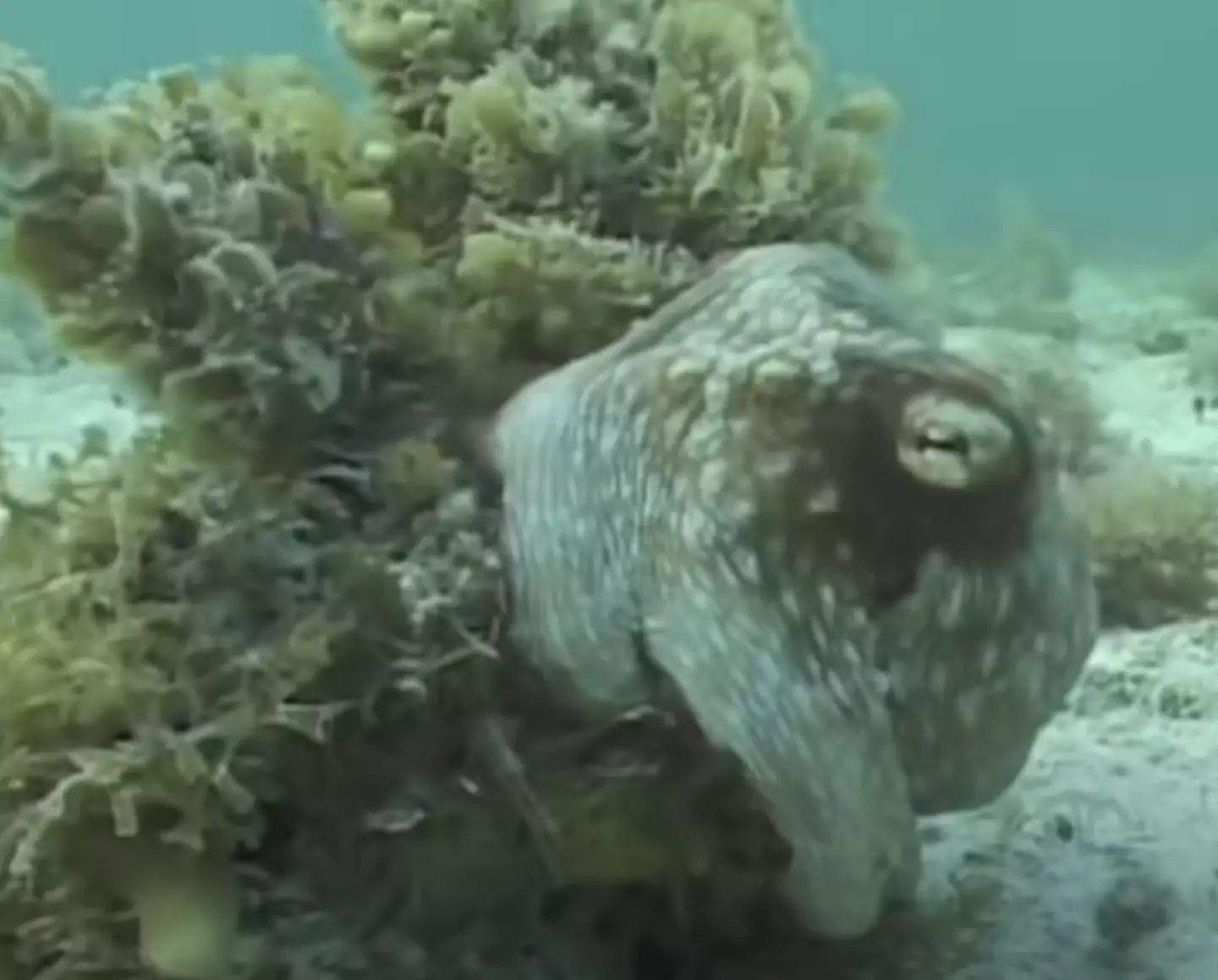 Now that's a jump scare. (YouTube/Discover Magazine/Roger Hanlon)
Now that's a jump scare. (YouTube/Discover Magazine/Roger Hanlon)
There is a group of underwater creatures called cephalopods which includes octopi like the one captured in the video, as well as squid and cuttlefish.
The inkfish can match the colour and texture of the surroundings in fractions of a second reports Discover Magazine. They can change both the size and shape of ‘dynamic spots of pigments on their skin called chromatophores’.
The marine biologist pointed out that while the animals are colour blind they are still ‘capable of creating colour-match patterns’. So, a combination of those chromatophores and reflectors underneath enables the sea creatures to ‘blend in with vegetation, rocks, or smooth surfaces almost imperceptibly’.
Watch Hanlon’s video here (and prepare for the jump scare):
Play
Users who watched the clip on YouTube found it ‘truly amazing’ and ‘astounding’.
One wrote: “Cloaking device level: infinity.”
Another commented: “Nature is amazing, it’s like some ancient alien aquatic morphing species lol.”
Others said it ‘just blows their mind’ as someone else put: “I find this creature to be intriguing, amazing, beautiful and terrifying all at the same time.”
One also joked: “Octopus: I took me half a day to camouflage and now you come along and ruin everything, F**K OFF I'M DONE HERE!”Featured Image Credit: YouTube/Discover Magazine/Roger Hanlon
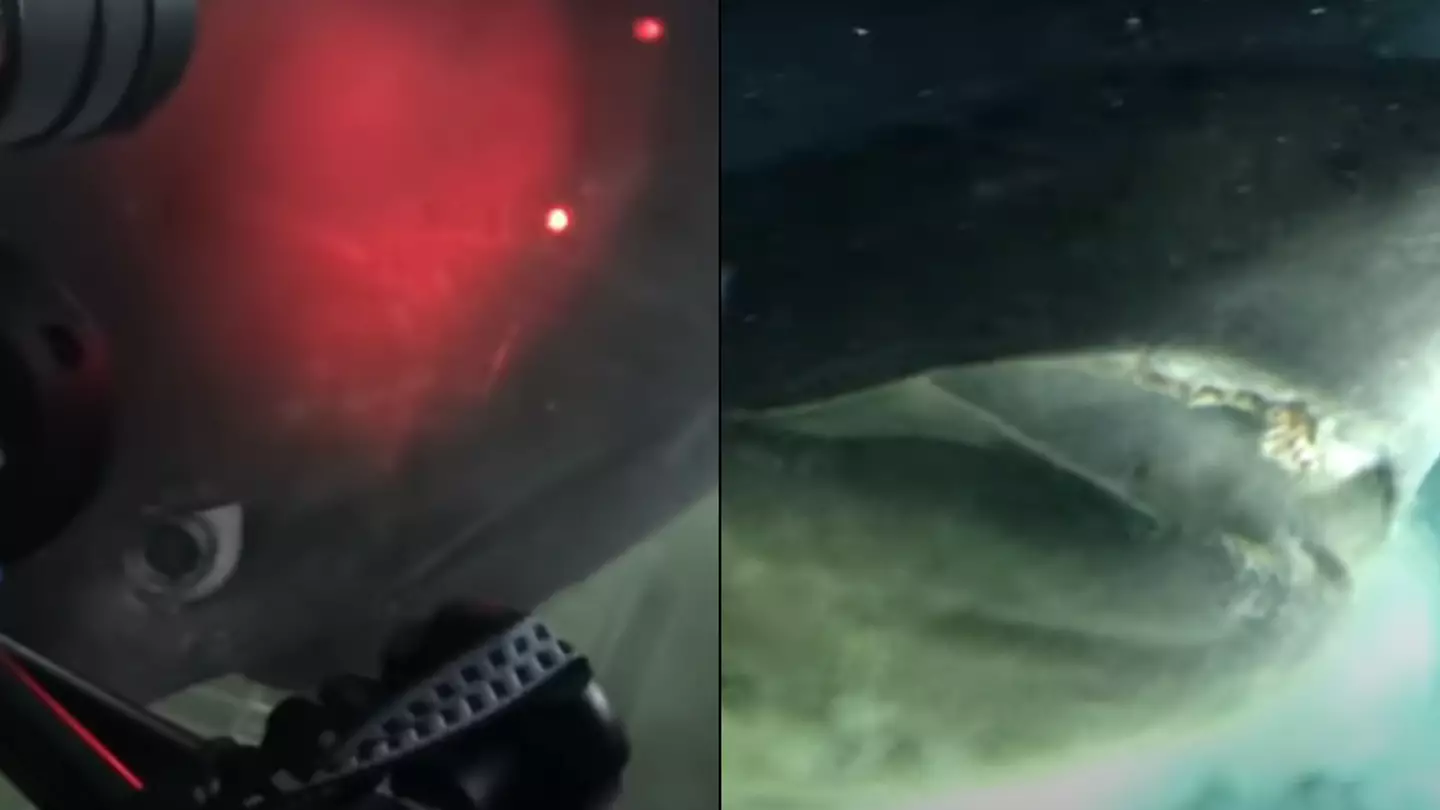
Published 16:13 29 Apr 2024 GMT+1
Sub on ocean floor comes into contact with deep-sea monster that predates dinosaurs in mind-blowing footage
The historic feat - which came from OceanX - was the first time a submersible had tagged a sea animal
If you have a fear of the ocean, then look away now as a submersible captured some shocking footage of a pre-historic sea creature while it was exploring the ocean floor.
The scientists in the OceanX sub itself were left in awe by what they saw, as they made history.
Deep sea footage caught by a GoPro that was dropped down a few feet into the ocean is enough to creep some people out, but what was found in this viral video is something a lot more ground-breaking and to some, a lot weirder.
The video was posted on OceanX YouTube channel four years ago and is just over 90 seconds long, but what the explorers managed to capture is truly breath-taking.
In the description of the video, the company states that it has partnered with the Cape Eleuthera Institute to become the first ever submersible to tag an animal.
"Our objective was the deep-sea shark, the bluntnose sixgill," it explained.
"This ancient species predates most dinosaurs, and is a dominant predator of the deep sea ecosystem."
FSU Marine Lab's Dr. Dean Grubbs was the lead scientist on the mission, and succeeded in achieving the goal.
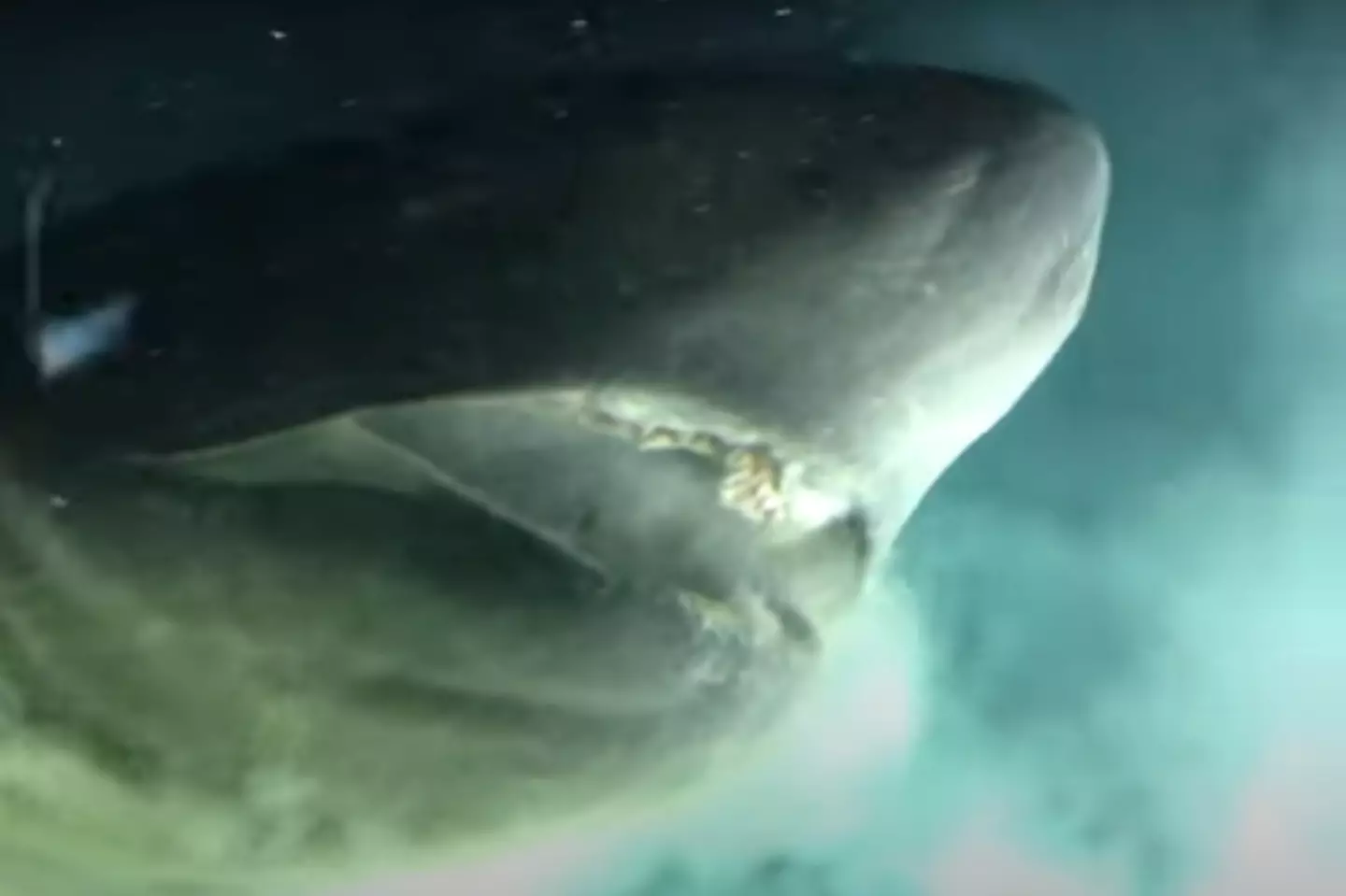 The pre-historic shark helped the team tag an animal from a submersible for the first time ever. (Youtube/OceanX)
The pre-historic shark helped the team tag an animal from a submersible for the first time ever. (Youtube/OceanX)
Grubbs let the team to become the first ever to put a satellite tag on the elusive species of sharks on the sea floor, with scientists in the past only able to do so by bringing them up to the surface.
The team did this on the sea floor, and the footage also shows how shocked the men were in the sub.
Spotting the shark swimming around it, one of them said: "Oh, wow!"
"Look at the width of that thing!"
Attempting to get her in the prime position to tag, they were hesitant to tag her when she was belly-side, waiting for her to get closer.
Which she did, pushing her nose up against the side of the submarine, glancing up at the intrigued scientists, even seeming to roll her eyes as she swam away.
The scientists couldn't believe just how big the female shark was, pointing out that she was larger than average.
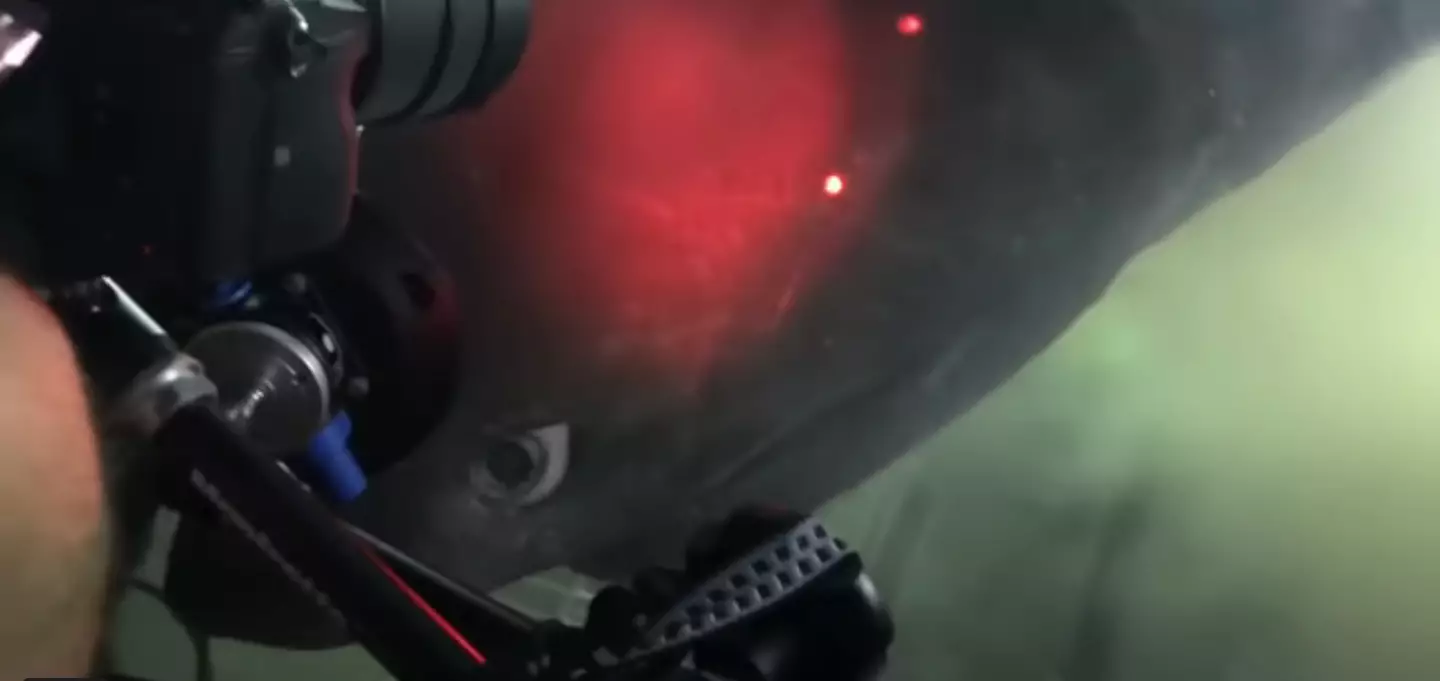
While documentaries depict the various weird and wonderful living things that lurk beneath the surface, we don’t actually know that much about life in the deep blue.
But when a scientists took a trip down to the Nazca Ridge, they found some things they’d never seen before.

Pretty cute, right? (ROV SuBastian / Schmidt Ocean Institute)
In one stretch of 1.9 miles, the team found 20 possible new species, and they look pretty cool.
The footage shows the first ever sightings of these creatures, which include Bathyphysa siphonophores, AKA flying spaghetti monsters, a Casper octopus and a sea toad.
The findings began when a group of oceanographers from Schmidt Ocean Institute explored the Ridge, which is basically an underwater mountain chain nearly a thousand miles from the Chile coast.
In one stretch of 1.9 miles, the team found 20 possible new species, and they look pretty cool.
The footage shows the first ever sightings of these creatures, which include Bathyphysa siphonophores, AKA flying spaghetti monsters, a Casper octopus and a sea toad.
The findings began when a group of oceanographers from Schmidt Ocean Institute explored the Ridge, which is basically an underwater mountain chain nearly a thousand miles from the Chile coast.

Bathyphysa siphonophores, AKA flying spaghetti monsters (ROV SuBastian / Schmidt Ocean Institute)
With the use of underwater robots, they could map out the mountain and got a surprise when they saw the never-before-seen species.
Through a giant coral garden, around the size of three tennis courts and untouched by the decay that’s taken over many oceans, they found rockfish, brittle stars, and king crabs.
They also captured a live Promachoteuthis squid for the first time ever.
The find was so rare that only few collected specimens have been recalled, and most were from the 1800s.
With the use of underwater robots, they could map out the mountain and got a surprise when they saw the never-before-seen species.
Through a giant coral garden, around the size of three tennis courts and untouched by the decay that’s taken over many oceans, they found rockfish, brittle stars, and king crabs.
They also captured a live Promachoteuthis squid for the first time ever.
The find was so rare that only few collected specimens have been recalled, and most were from the 1800s.
 The species were found on the Nazca Ridge (ROV SuBastian / Schmidt Ocean Institute)
The species were found on the Nazca Ridge (ROV SuBastian / Schmidt Ocean Institute)Having been the third time the team had been out to the stretch of water this year, this find isn’t as magical as the other two, which ended up documenting over 150 new species.
Nonetheless, the discovery is still pretty extraordinary.
Tomer Ketter, Co-Chief Scientist and Schmidt Ocean Institute Marine Technician, said in a press release: “Upon concluding our third expedition to the region, we've explored around 25 seamounts on the Nazca and Salas y Gómez Ridges.
“Our findings highlight the remarkable diversity of these ecosystems, while simultaneously revealing the gaps in our understanding of how the seamount ecosystems are interconnected.
“We hope the data gathered from these expeditions will help inform future policies, safeguarding these pristine environments for future generations.”

They found a genus Sternostylus (ROV SuBastian / Schmidt Ocean Institute)
This area was known to house 1,019 species alone, and now that the expedition have found more species, it’s looking more like 1,300 different swimmers live there.
Professor Alex David Rogers, Science Director of Ocean Census, explained: “The seamounts of the Southeastern Pacific host remarkable biological diversity, with species found nowhere else to date.
“The work our taxonomists have conducted aboard Falkor (too), supported by Schmidt Ocean Institute team, will significantly enhance our understanding of the distribution of remarkable life forms on these underwater mountains, including several that have never before been mapped or seen by human eyes.”
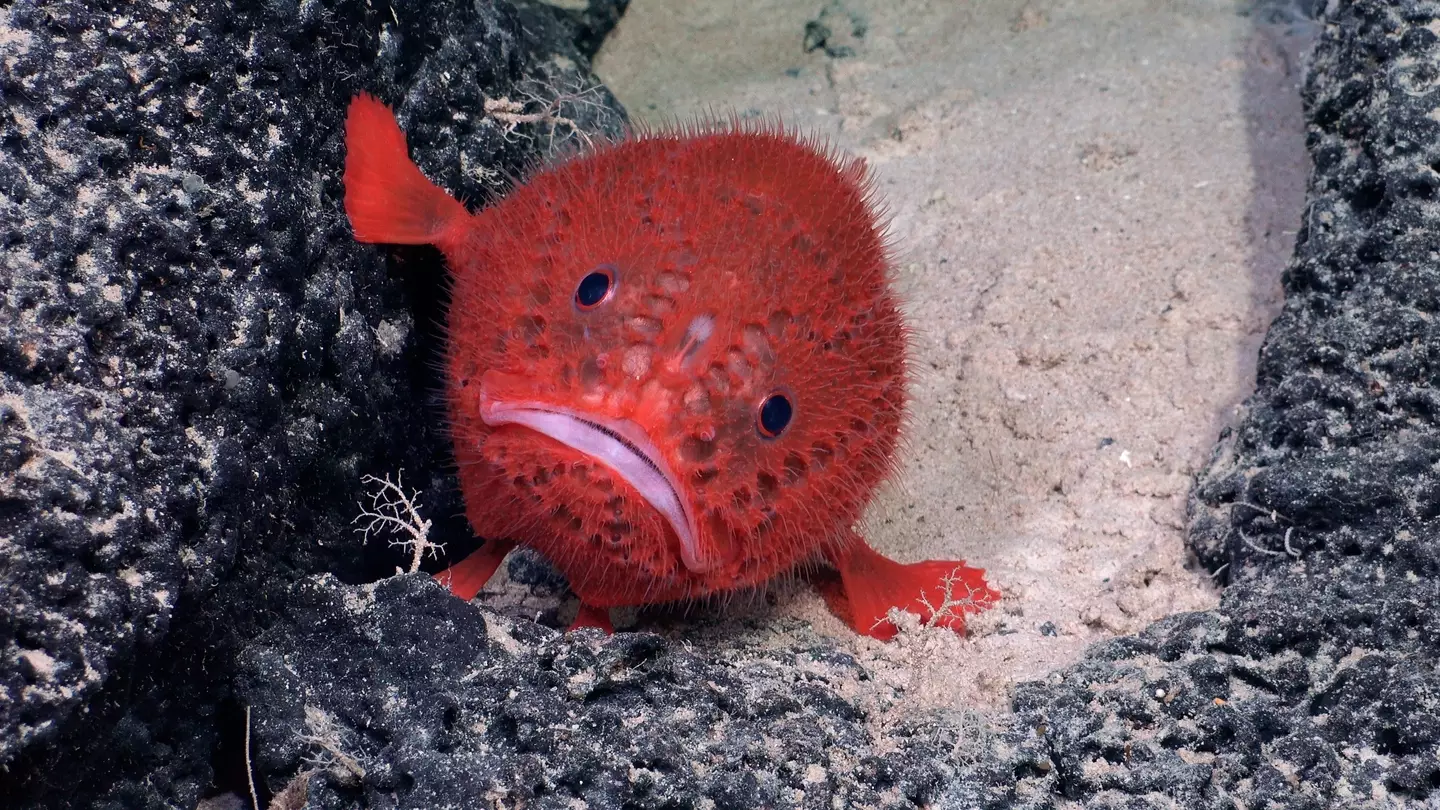
This area was known to house 1,019 species alone, and now that the expedition have found more species, it’s looking more like 1,300 different swimmers live there.
Professor Alex David Rogers, Science Director of Ocean Census, explained: “The seamounts of the Southeastern Pacific host remarkable biological diversity, with species found nowhere else to date.
“The work our taxonomists have conducted aboard Falkor (too), supported by Schmidt Ocean Institute team, will significantly enhance our understanding of the distribution of remarkable life forms on these underwater mountains, including several that have never before been mapped or seen by human eyes.”

The found a 'vibrant ecosystem' (ROV SuBastian / Schmidt Ocean Institute)
Dr Jyotika Virmani, Co-Chief Scientist and Schmidt Ocean Institute Executive Director, added: “The discovery of a new seamount almost two miles tall - almost four times as tall as the Burj Khalifa - with a vibrant ecosystem was very exciting.
“Only 26 percent of the seafloor has been mapped to this high resolution and each expedition on Falkor (too) brings into focus a little more of the unknown seabed and life on our home planet.”Featured Image Credit: ROV SuBastian/Schmidt Ocean Institute
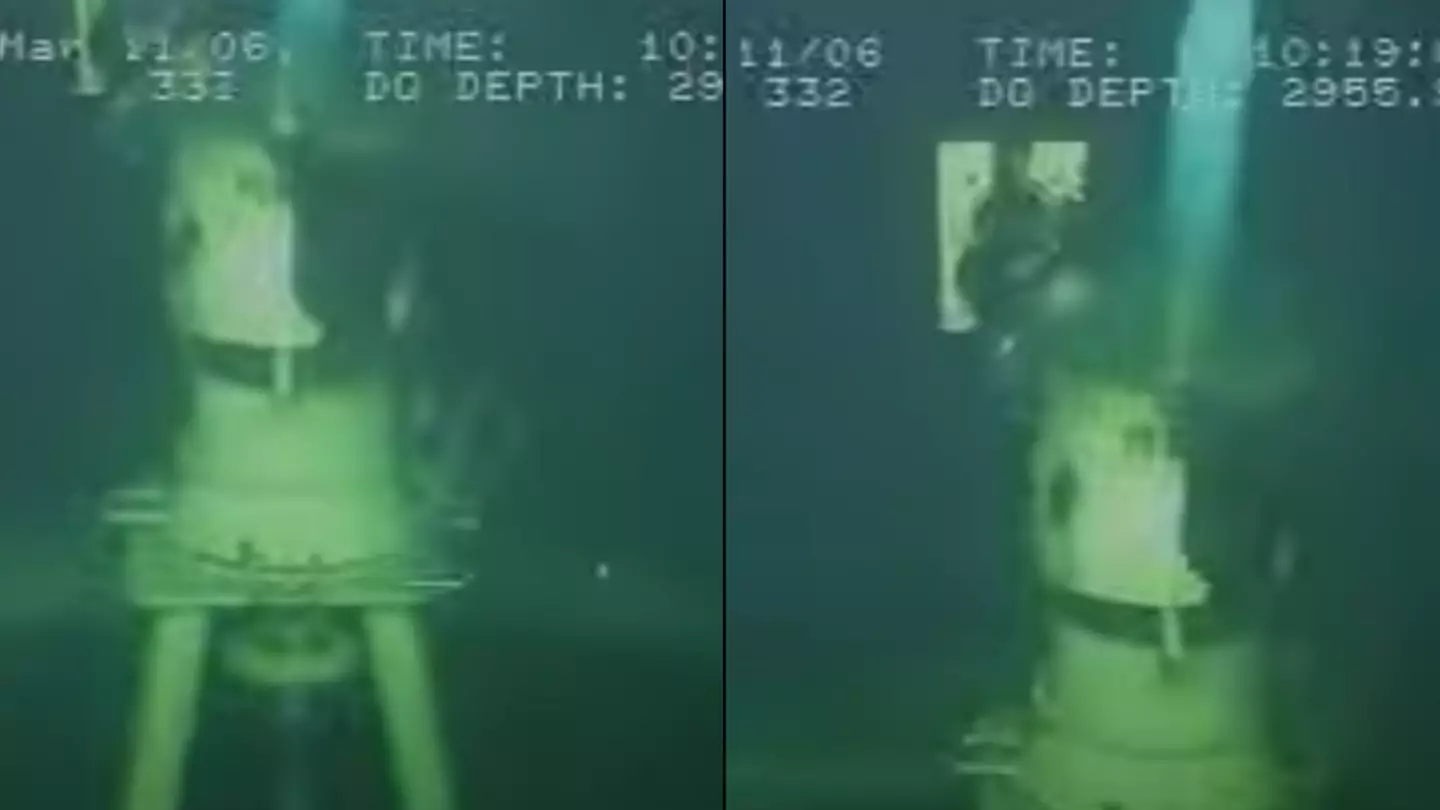
Dr Jyotika Virmani, Co-Chief Scientist and Schmidt Ocean Institute Executive Director, added: “The discovery of a new seamount almost two miles tall - almost four times as tall as the Burj Khalifa - with a vibrant ecosystem was very exciting.
“Only 26 percent of the seafloor has been mapped to this high resolution and each expedition on Falkor (too) brings into focus a little more of the unknown seabed and life on our home planet.”Featured Image Credit: ROV SuBastian/Schmidt Ocean Institute

Published 11:17 3 May 2024 GMT+1
Scientists get unexpected deep sea visitor when inspecting gas line 3,000ft underwater
It wasn't a gas line they came face to face with...
The scary thing about diving into the deepest parts of the ocean is that there is so much you can't see, and you don't always know what you will meet.
And that is exactly what happened for a group of scientists in 2006, who dived down 3,000 feet in the ocean to explore a gas line.
They instead were met with something much more unexpected.
A video of the exploration has been shared online, showing scientists diving to inspect a gas line owned by Helix Energy Solutions.
Their work is suddently disturbed by a huge sea creature that moves into view on their camera on their Canyon Offshore ROV.
The scientists were greeted by a sperm whale who had joined them at 3,000 feet deep, with the creature being seen gliding past and heading deeper into the water.
Sperm whales can reach lengths of 60 feet and weigh as much as 125,000 pounds— about as much as a fully-loaded Boeing 737 airplane - so it's no wonder this one seems huge as it glides past the camera blocking everything else in view.
Scientists get unexpected deep sea visitor when inspecting gas line 3,000ft underwater
It wasn't a gas line they came face to face with...
The scary thing about diving into the deepest parts of the ocean is that there is so much you can't see, and you don't always know what you will meet.
And that is exactly what happened for a group of scientists in 2006, who dived down 3,000 feet in the ocean to explore a gas line.
They instead were met with something much more unexpected.
A video of the exploration has been shared online, showing scientists diving to inspect a gas line owned by Helix Energy Solutions.
Their work is suddently disturbed by a huge sea creature that moves into view on their camera on their Canyon Offshore ROV.
The scientists were greeted by a sperm whale who had joined them at 3,000 feet deep, with the creature being seen gliding past and heading deeper into the water.
Sperm whales can reach lengths of 60 feet and weigh as much as 125,000 pounds— about as much as a fully-loaded Boeing 737 airplane - so it's no wonder this one seems huge as it glides past the camera blocking everything else in view.

While the quality of the footage isn't amazing, a sperm whale is seen gliding past the camera and heading even deeper into the ocean. (Helix Energy Solutions)
The clip of the whale was shared on YouTube and has been shared on Twitter/X, with some pointing out how amazing it was that an animal can be found so deep in the ocean.
One person wrote: "Amazing how a biological creature with bone and organs can withstand the intense pressure that deep. We need to build machines with very thick metal to get that deep, and even then they are sometimes crushed like tin cans.
"Also The fact that whales can't breathe under water yet he is just cruising along the bottom 3000ft deep."
"It's crazy to think we haven't explored the deeeeeeeeeeeeep ocean. What's down there?" asked another.
A third person wrote: "Make us realize that we still have no idea from what is down there, like from the few creatures we have seen before on certain deep sea videos, I'm sure there is way more down there.
The clip of the whale was shared on YouTube and has been shared on Twitter/X, with some pointing out how amazing it was that an animal can be found so deep in the ocean.
One person wrote: "Amazing how a biological creature with bone and organs can withstand the intense pressure that deep. We need to build machines with very thick metal to get that deep, and even then they are sometimes crushed like tin cans.
"Also The fact that whales can't breathe under water yet he is just cruising along the bottom 3000ft deep."
"It's crazy to think we haven't explored the deeeeeeeeeeeeep ocean. What's down there?" asked another.
A third person wrote: "Make us realize that we still have no idea from what is down there, like from the few creatures we have seen before on certain deep sea videos, I'm sure there is way more down there.

Sperm Whales have been known to dive down to below 3,000 feet, and have been spotted at oil rigs previously. (Pexels)
"Do we can fly to planets SO far away, but still can't go to the bottom of wherever it might be ?"
This isn't the first time that whales and deep sea divers have come face to face near an oil rig either, as it appears that whales like to pop up there now and then.
In Mexico, there can be as many as 3,000 endangered sperm whales found in the northern Gulf.
These animals are most often found in waters deeper than 3,000 feet, including the area around the Deepwater horizon drill rig near Mexico, but can end up being disturbed by noises and activities such as drilling or building.Featured Image Credit: Helix Energy Solutions
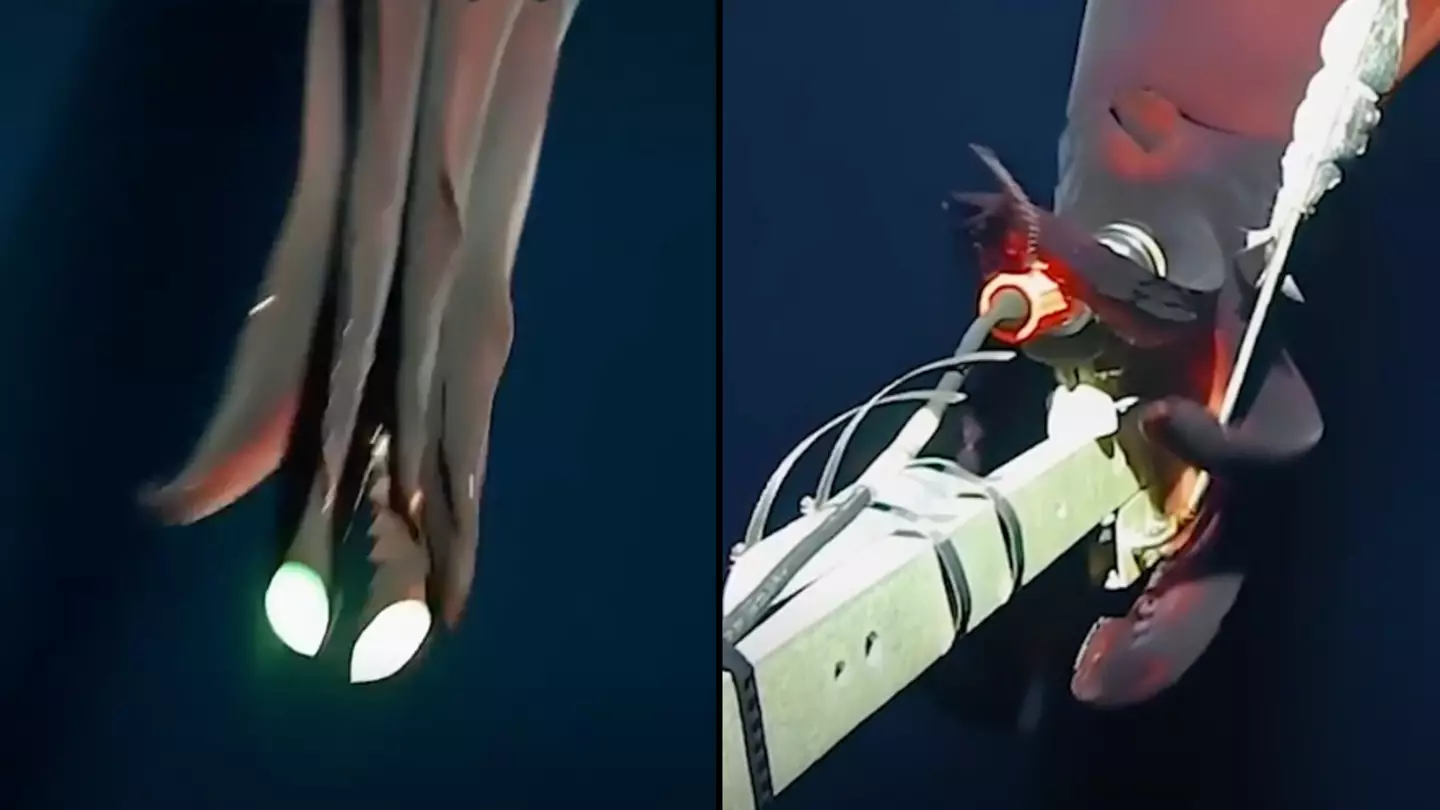
Published 16:36 18 May 2024 GMT+1
Terrifying video shows moment camera is attacked by rare deep-sea squid with 'headlights'
The deep-sea creature thought that the camera was prey, as two angles of the incident were captured
Chilling footage has been released of the moment where an underwater camera was gripped by a deep-sea creature.
It's things like this that make people scared of the sea, and it's worth noting that we as humans have only explored five percent of the world ocean, according to NOAA Ocean Exploration.
To think about how many creepy and scary creatures live in the depths of the sea, and the fact that there's a high possibility that there are even more that we don't know about - which scientists might not ever discover.
People are already scared by clips just a few metres below sea level, revealing how fish react to seeing a camera, or in some cases, bits of food.
The latest bit of breath-taking footage has been released by scientists from the University of Western Australia and Kelpie Geosciences in the UK, that has left viewers stunned.
In a clip that rivals a sub's interaction with an ancient deep-sea creature up close, where scientists could see its eye, this ranks highly among creepy-yet-educational ocean exploration videos.
It is said that creature mistook the camera for prey in the South Pacific on Wednesday 8 May, with Associate Professor Stewart stating: “As we were reviewing the footage, we realised we had captured something very rare.”
"Do we can fly to planets SO far away, but still can't go to the bottom of wherever it might be ?"
This isn't the first time that whales and deep sea divers have come face to face near an oil rig either, as it appears that whales like to pop up there now and then.
In Mexico, there can be as many as 3,000 endangered sperm whales found in the northern Gulf.
These animals are most often found in waters deeper than 3,000 feet, including the area around the Deepwater horizon drill rig near Mexico, but can end up being disturbed by noises and activities such as drilling or building.Featured Image Credit: Helix Energy Solutions

Published 16:36 18 May 2024 GMT+1
Terrifying video shows moment camera is attacked by rare deep-sea squid with 'headlights'
The deep-sea creature thought that the camera was prey, as two angles of the incident were captured
Chilling footage has been released of the moment where an underwater camera was gripped by a deep-sea creature.
It's things like this that make people scared of the sea, and it's worth noting that we as humans have only explored five percent of the world ocean, according to NOAA Ocean Exploration.
To think about how many creepy and scary creatures live in the depths of the sea, and the fact that there's a high possibility that there are even more that we don't know about - which scientists might not ever discover.
People are already scared by clips just a few metres below sea level, revealing how fish react to seeing a camera, or in some cases, bits of food.
The latest bit of breath-taking footage has been released by scientists from the University of Western Australia and Kelpie Geosciences in the UK, that has left viewers stunned.
In a clip that rivals a sub's interaction with an ancient deep-sea creature up close, where scientists could see its eye, this ranks highly among creepy-yet-educational ocean exploration videos.
It is said that creature mistook the camera for prey in the South Pacific on Wednesday 8 May, with Associate Professor Stewart stating: “As we were reviewing the footage, we realised we had captured something very rare.”
 So much of the sea has been left unexplored. (Getty Stock Photo)
So much of the sea has been left unexplored. (Getty Stock Photo)In the video, a rare squid can be seen wrapping its arms around a camera 1026m below the surface, where it is almost pitch black.
It's not just any rare squid though, known as the Taningia Danae, it can be seen making its approach towards the camera and spreading its tentacles over the camera lens, seemingly thinking that it was something that it could eat.
The species is known for having two incredibly large photophores on the end of two of its tentacles that produce bioluminescence, which have also been described as 'headlights'.
They are the largest known photophores in the known world, and are also known to produce flashes in the dark ocean to disorientate prey while hunting, which can also be seen in the video.

Two angles of the footage highlighted just how massive the squid was. (UWA/Inkfish)
The equipment captured two angles of the squid wrapping its tentacles around the lens, one from the scene and one from behind, showcasing just how massive the squid is.
Also known as the Dana octopus squid, it is one of the largest known squid species, able to reach a total length of 2.3m. The largest known specimen weighed a whopping 161.4kg.Featured Image Credit: UWA/Inkfish
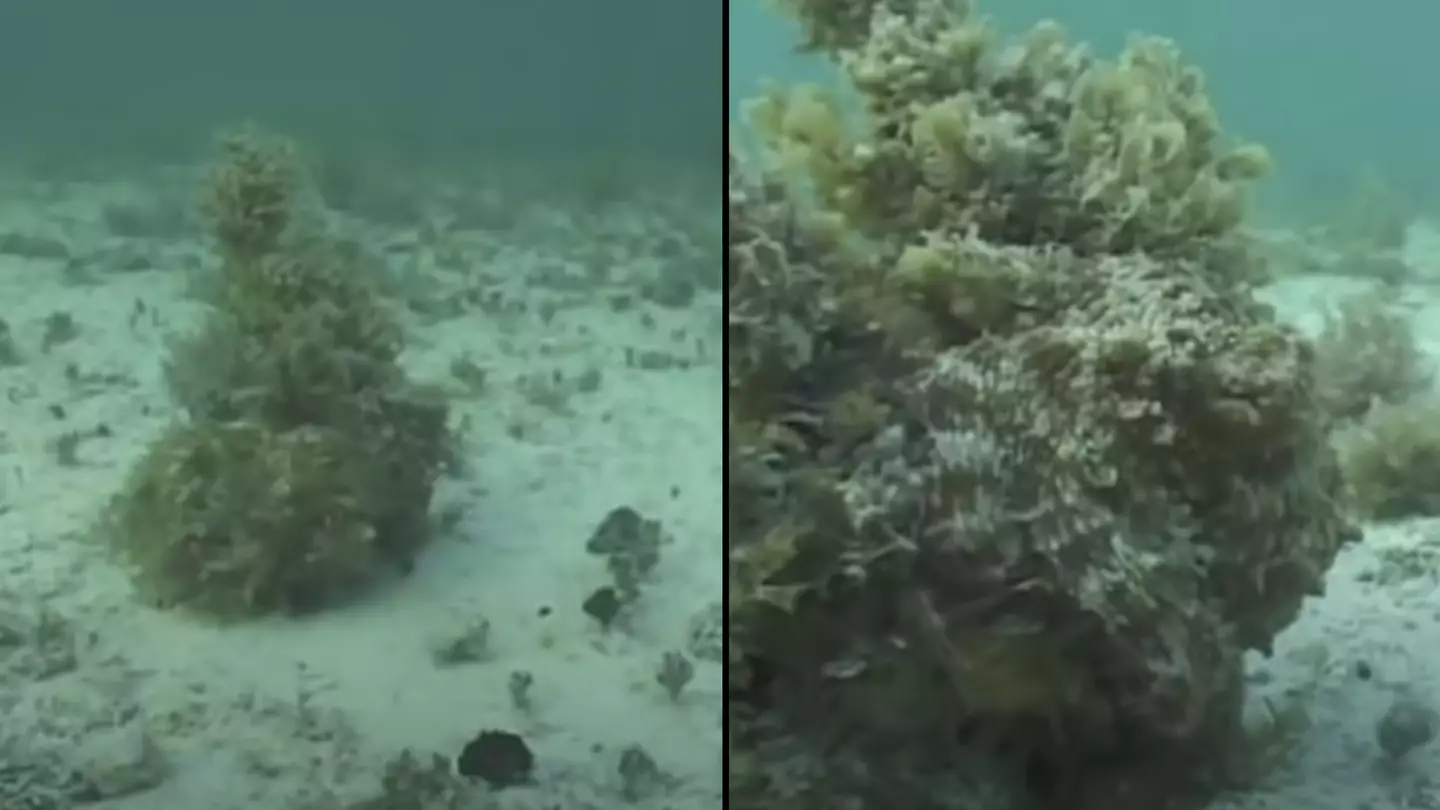
Published 10:38 11 May 2024 GMT+1
People jump in shock after spotting huge octopus camouflaged in the sea
The viral video captures the animal's amazing ability

Jess Battison
A fear of the sea is real for so many people. And to be fair, it’s pretty understandable.
There’s so much we don’t know about what’s out there in the world’s waters as scientists are yet to explore more than 80 percent of the ocean.
Plus, included in the things we do know about it are the likes of sharks and killer whales. So, you know, a very valid fear to have.
But one old viral video that has people jumping in shock is actually of an octopus chilling on the sea floor.
Famous for their round bodies and eight long arms, the sea animals can radically alter their shape to squeeze through tiny gaps. And it seems that’s not the only thing they can dramatically change.
The equipment captured two angles of the squid wrapping its tentacles around the lens, one from the scene and one from behind, showcasing just how massive the squid is.
Also known as the Dana octopus squid, it is one of the largest known squid species, able to reach a total length of 2.3m. The largest known specimen weighed a whopping 161.4kg.Featured Image Credit: UWA/Inkfish

Published 10:38 11 May 2024 GMT+1
People jump in shock after spotting huge octopus camouflaged in the sea
The viral video captures the animal's amazing ability

Jess Battison
A fear of the sea is real for so many people. And to be fair, it’s pretty understandable.
There’s so much we don’t know about what’s out there in the world’s waters as scientists are yet to explore more than 80 percent of the ocean.
Plus, included in the things we do know about it are the likes of sharks and killer whales. So, you know, a very valid fear to have.
But one old viral video that has people jumping in shock is actually of an octopus chilling on the sea floor.
Famous for their round bodies and eight long arms, the sea animals can radically alter their shape to squeeze through tiny gaps. And it seems that’s not the only thing they can dramatically change.

Doesn't look like an octopus does it? (YouTube/Discover Magazine/Roger Hanlon)
Marine biologist Roger Hanlon was filming his dive when he came across what looked like an underwater bush, just a big plant siting among some smaller plants on the sea floor. But then he ended up screaming ‘bloody murder’.
Like magic, a huge octopus suddenly reveals itself having been incredibly camouflaged.
Hanlon was blown away by the transformation and he previously said on the Science Friday radio show: “No one comes even close to the speed and diversity of appearances.”
Marine biologist Roger Hanlon was filming his dive when he came across what looked like an underwater bush, just a big plant siting among some smaller plants on the sea floor. But then he ended up screaming ‘bloody murder’.
Like magic, a huge octopus suddenly reveals itself having been incredibly camouflaged.
Hanlon was blown away by the transformation and he previously said on the Science Friday radio show: “No one comes even close to the speed and diversity of appearances.”
 Now that's a jump scare. (YouTube/Discover Magazine/Roger Hanlon)
Now that's a jump scare. (YouTube/Discover Magazine/Roger Hanlon)There is a group of underwater creatures called cephalopods which includes octopi like the one captured in the video, as well as squid and cuttlefish.
The inkfish can match the colour and texture of the surroundings in fractions of a second reports Discover Magazine. They can change both the size and shape of ‘dynamic spots of pigments on their skin called chromatophores’.
The marine biologist pointed out that while the animals are colour blind they are still ‘capable of creating colour-match patterns’. So, a combination of those chromatophores and reflectors underneath enables the sea creatures to ‘blend in with vegetation, rocks, or smooth surfaces almost imperceptibly’.
Watch Hanlon’s video here (and prepare for the jump scare):
Play
Users who watched the clip on YouTube found it ‘truly amazing’ and ‘astounding’.
One wrote: “Cloaking device level: infinity.”
Another commented: “Nature is amazing, it’s like some ancient alien aquatic morphing species lol.”
Others said it ‘just blows their mind’ as someone else put: “I find this creature to be intriguing, amazing, beautiful and terrifying all at the same time.”
One also joked: “Octopus: I took me half a day to camouflage and now you come along and ruin everything, F**K OFF I'M DONE HERE!”Featured Image Credit: YouTube/Discover Magazine/Roger Hanlon

Published 16:13 29 Apr 2024 GMT+1
Sub on ocean floor comes into contact with deep-sea monster that predates dinosaurs in mind-blowing footage
The historic feat - which came from OceanX - was the first time a submersible had tagged a sea animal
If you have a fear of the ocean, then look away now as a submersible captured some shocking footage of a pre-historic sea creature while it was exploring the ocean floor.
The scientists in the OceanX sub itself were left in awe by what they saw, as they made history.
Deep sea footage caught by a GoPro that was dropped down a few feet into the ocean is enough to creep some people out, but what was found in this viral video is something a lot more ground-breaking and to some, a lot weirder.
The video was posted on OceanX YouTube channel four years ago and is just over 90 seconds long, but what the explorers managed to capture is truly breath-taking.
In the description of the video, the company states that it has partnered with the Cape Eleuthera Institute to become the first ever submersible to tag an animal.
"Our objective was the deep-sea shark, the bluntnose sixgill," it explained.
"This ancient species predates most dinosaurs, and is a dominant predator of the deep sea ecosystem."
FSU Marine Lab's Dr. Dean Grubbs was the lead scientist on the mission, and succeeded in achieving the goal.
 The pre-historic shark helped the team tag an animal from a submersible for the first time ever. (Youtube/OceanX)
The pre-historic shark helped the team tag an animal from a submersible for the first time ever. (Youtube/OceanX)Grubbs let the team to become the first ever to put a satellite tag on the elusive species of sharks on the sea floor, with scientists in the past only able to do so by bringing them up to the surface.
The team did this on the sea floor, and the footage also shows how shocked the men were in the sub.
Spotting the shark swimming around it, one of them said: "Oh, wow!"
"Look at the width of that thing!"
Attempting to get her in the prime position to tag, they were hesitant to tag her when she was belly-side, waiting for her to get closer.
Which she did, pushing her nose up against the side of the submarine, glancing up at the intrigued scientists, even seeming to roll her eyes as she swam away.
The scientists couldn't believe just how big the female shark was, pointing out that she was larger than average.

The shark's pupils were deep green as it glanced up at the scientists. (Youtube/OceanX)
Her species usually grow up to 20-feet in length, but rarely anyone has been so up close and personal with one before.
The species predates most dinosaurs, meaning they have roamed the seas for tens of millions of years.
People were just as in awe in the comments section.
One user said: "If not the size, this shark's eye alone would have given me a straight heart attack."
Another commented: "That eye close-up was wicked."
A third put: "Scientists, 'Whoa.' That's when you know it's serious."
Her species usually grow up to 20-feet in length, but rarely anyone has been so up close and personal with one before.
The species predates most dinosaurs, meaning they have roamed the seas for tens of millions of years.
People were just as in awe in the comments section.
One user said: "If not the size, this shark's eye alone would have given me a straight heart attack."
Another commented: "That eye close-up was wicked."
A third put: "Scientists, 'Whoa.' That's when you know it's serious."








